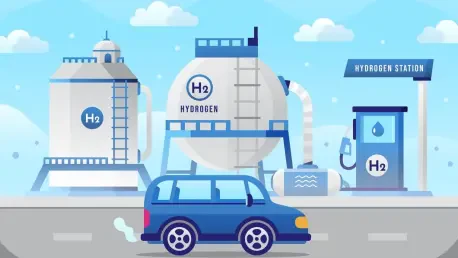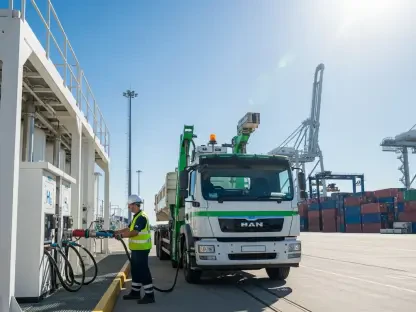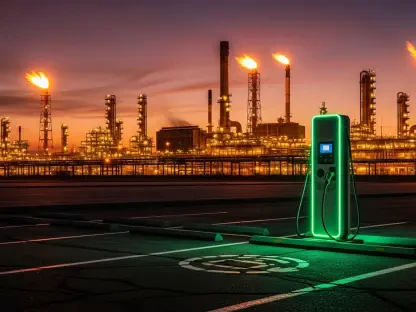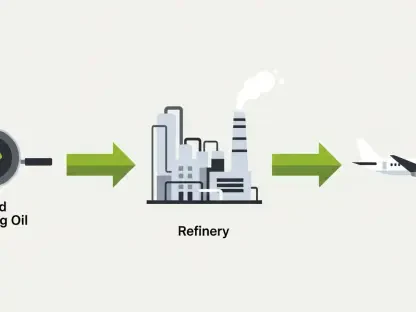Imagine a race track where the roar of engines fills the air, yet the exhaust emits nothing but water vapor. This vision of sustainable high-performance racing is no longer a distant dream but a tangible reality with the resurgence of hydrogen combustion engines. As the automotive industry grapples with the urgent need to reduce carbon emissions, hydrogen has emerged as a compelling alternative to traditional fossil fuels, particularly in the high-stakes world of motorsport. This review delves into the intricacies of hydrogen combustion technology, spotlighting its potential to redefine performance and sustainability.
Core Features of Hydrogen Combustion Technology
Understanding the Combustion Mechanism
Hydrogen combustion engines operate on the familiar principles of internal combustion, yet they require significant adaptations to handle hydrogen’s unique properties. Unlike gasoline, hydrogen burns at a much faster rate, necessitating specialized engine designs with reinforced components to manage intense heat and pressure. This results in a power delivery that can rival conventional engines, offering an exhilarating driving experience without the carbon footprint.
The efficiency of these engines often surpasses that of fossil fuel counterparts due to hydrogen’s high energy content per unit of mass. However, the challenge lies in controlling combustion to prevent pre-ignition, a risk heightened by hydrogen’s low ignition energy. Engineers have developed advanced ignition systems and pre-ignition chambers to address this, ensuring smoother and safer operation even under extreme conditions.
Storage and Delivery Innovations
A critical aspect of hydrogen combustion technology is the storage of fuel, which poses distinct challenges due to hydrogen’s low density. High-pressure tanks or cryogenic liquid storage systems are typically employed, impacting vehicle weight and design. These solutions demand robust materials to withstand pressure, often adding complexity to the overall engineering process.
Delivery systems also require meticulous attention, as hydrogen must be transported safely from storage to engine. Current infrastructure for hydrogen refueling remains limited, hindering widespread adoption. Safety mechanisms, such as leak detection sensors and fail-safe valves, have been integrated to mitigate risks, though they add to the cost and intricacy of implementation.
Performance Analysis in Real-World Contexts
Power Output and Motorsport Applications
When it comes to performance, hydrogen combustion engines demonstrate remarkable potential, especially in motorsport. With power outputs capable of reaching impressive levels, these engines maintain the visceral thrill that defines racing. The ability to rev at high speeds while emitting only water vapor positions hydrogen as a game-changer for zero-carbon competitions.
A standout example is Alpine’s Alpenglow prototype, powered by the Hy6 engine, which boasts 740 brake horsepower and revs up to 9,000 RPM. This 3.5-liter twin-turbocharged V6 engine, fueled by compact hydrogen tanks, exemplifies how performance need not be sacrificed for sustainability. Its design preserves the raw sound and feel of traditional racing, appealing to enthusiasts and professionals alike.
Challenges in Efficiency and Safety
Despite the promising performance metrics, efficiency in hydrogen combustion engines is often offset by energy losses during production and storage. The process of compressing or liquefying hydrogen consumes significant energy, reducing the overall environmental benefit if not sourced sustainably. This remains a critical area for improvement as the technology scales.
Safety concerns also loom large, given hydrogen’s high flammability and propensity for leaks. While modern engineering has introduced multiple safeguards, the risk of ignition in confined spaces cannot be entirely eliminated. Continuous advancements in materials and system design are essential to ensure that safety standards keep pace with performance capabilities.
Industry Trends and Innovations
Advances in Engine Design
Recent years have seen substantial progress in hydrogen combustion technology, with innovations focusing on optimizing engine durability and fuel management. New alloys and cooling systems are being developed to handle the intense conditions of hydrogen combustion, extending engine lifespan. These advancements are crucial for making the technology viable beyond experimental prototypes.
Sustainable Hydrogen Production
Another significant trend is the shift toward sustainable hydrogen production methods. Green hydrogen, produced using renewable energy, and blue hydrogen, derived from natural gas with carbon capture, are gaining traction as cleaner alternatives to traditional gray, brown, or black hydrogen. Though currently more expensive, scaling these methods could lower costs over time, enhancing hydrogen’s appeal as a mainstream fuel.
Motorsport as a Testing Ground
The motorsport industry has become a vital testing ground for hydrogen technology, with organizations like F1 and Le Mans exploring zero-carbon regulations. This environment pushes the boundaries of what hydrogen combustion can achieve under extreme conditions. Companies investing in this space are not only innovating but also shaping future standards for sustainable racing.
Conclusion: Reflecting on Hydrogen’s Path Forward
Looking back on the journey of hydrogen combustion engines, their evolution stands out as a testament to human ingenuity in tackling environmental challenges. The technology demonstrates immense potential through prototypes like Alpine’s Alpenglow, which balances raw power with eco-conscious design. Despite hurdles in production costs and infrastructure, the strides made in engine efficiency and safety underscore a promising direction.
Moving forward, the focus should shift to accelerating the adoption of green and blue hydrogen production to curtail environmental impact. Investment in refueling infrastructure must be prioritized to make hydrogen a practical choice for manufacturers and consumers alike. Collaborative efforts between industry leaders and policymakers could pave the way for integrating this technology into broader automotive applications, ensuring that the roar of engines continues without compromising the planet’s future.









